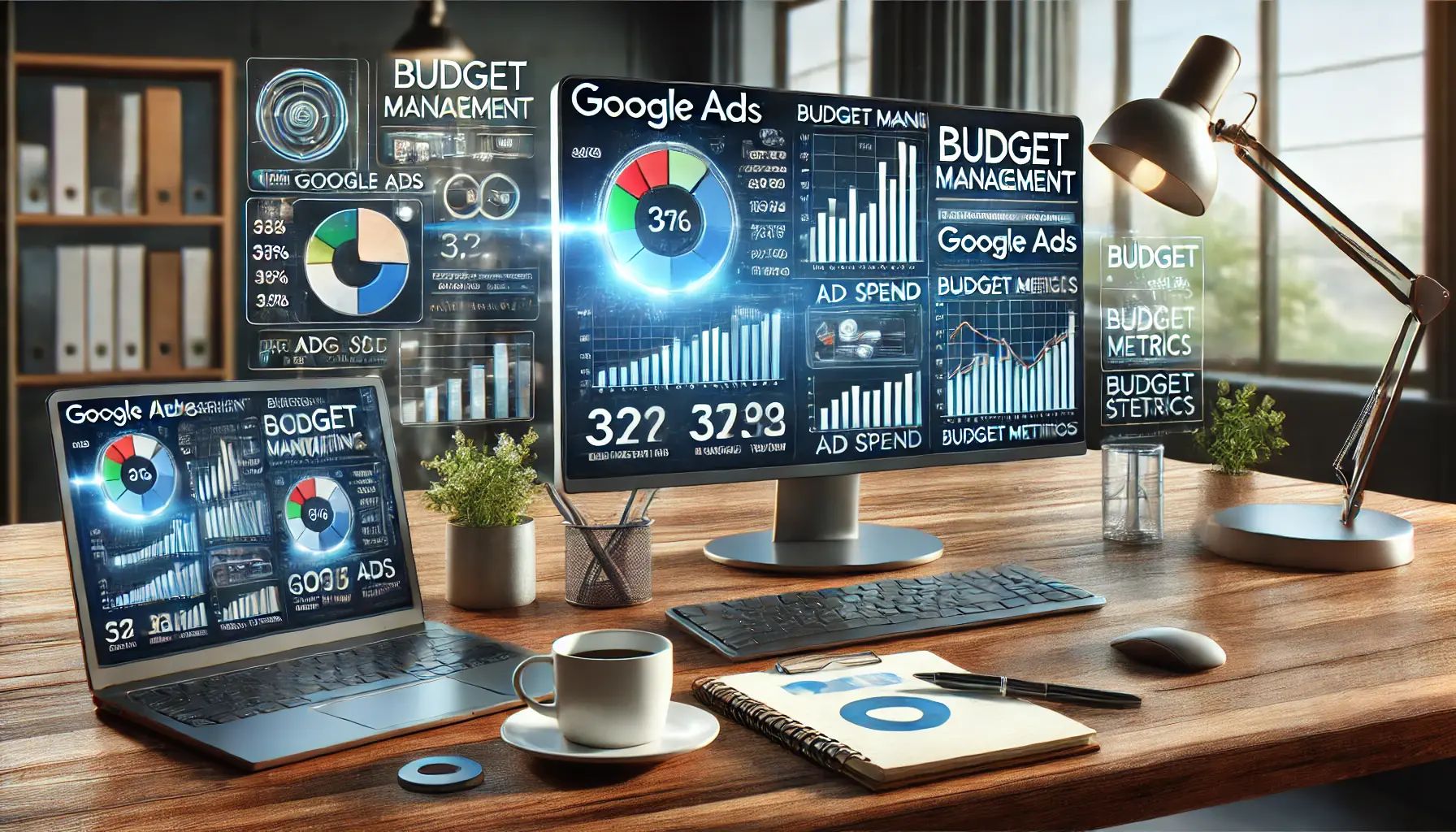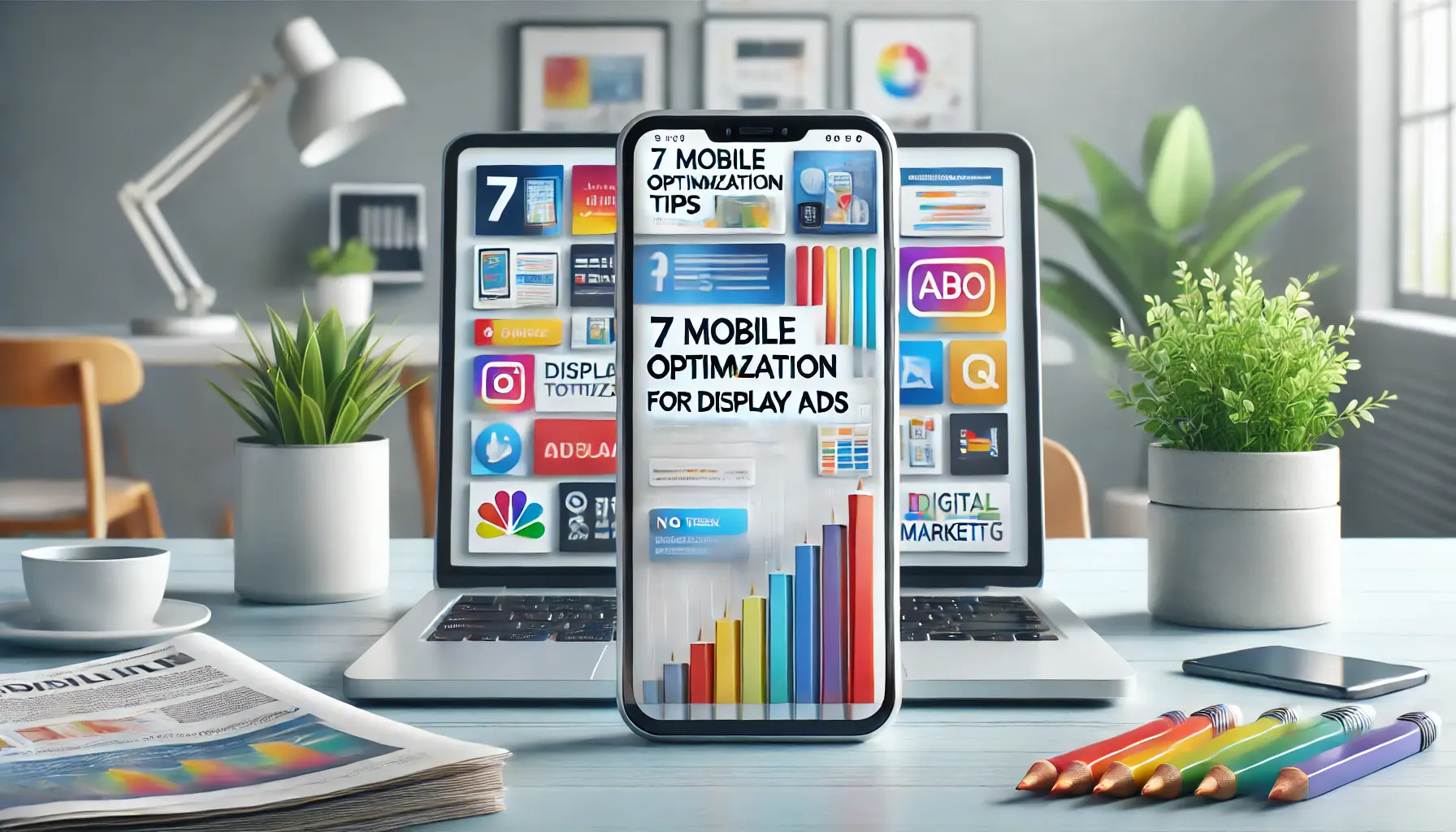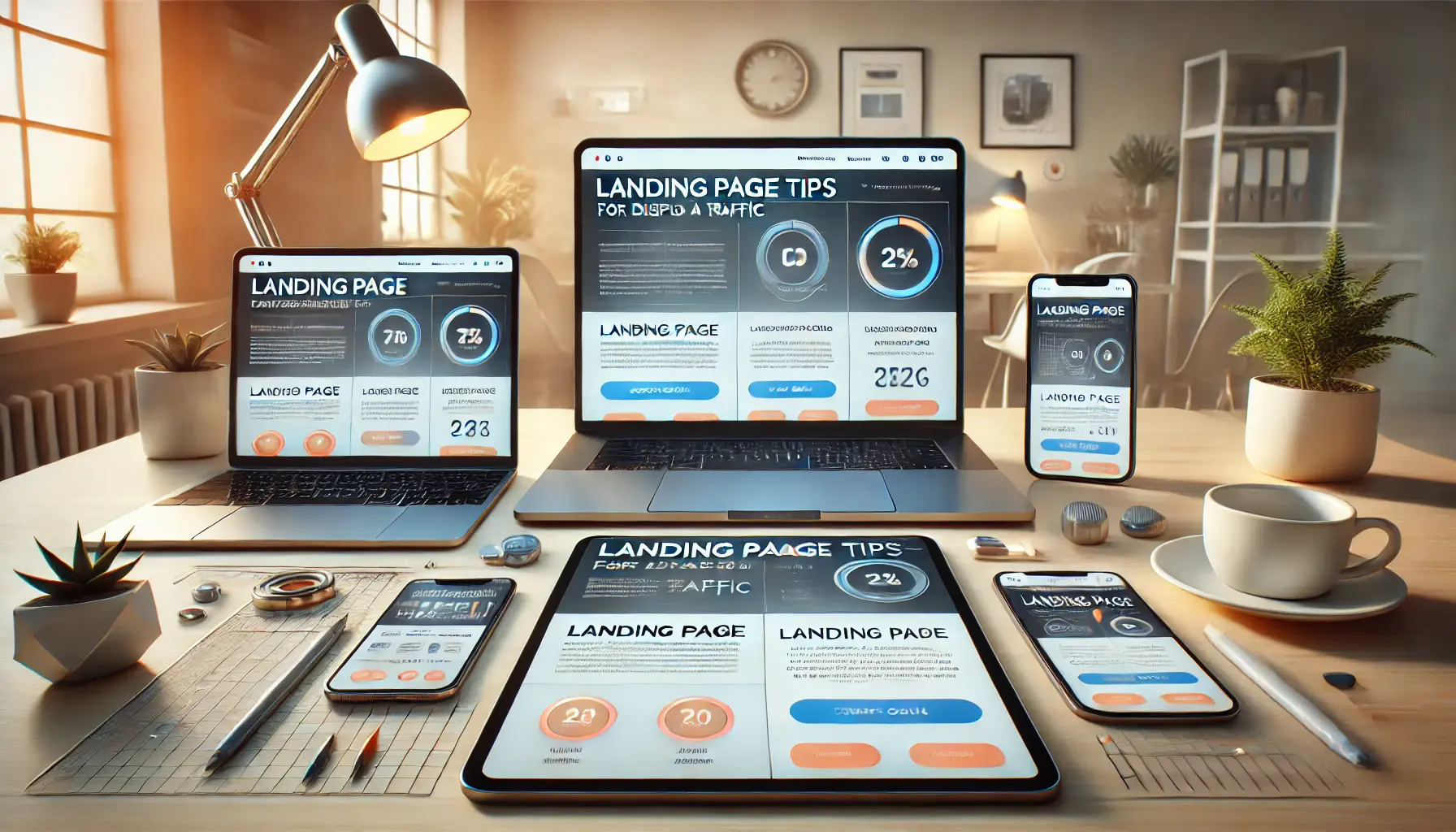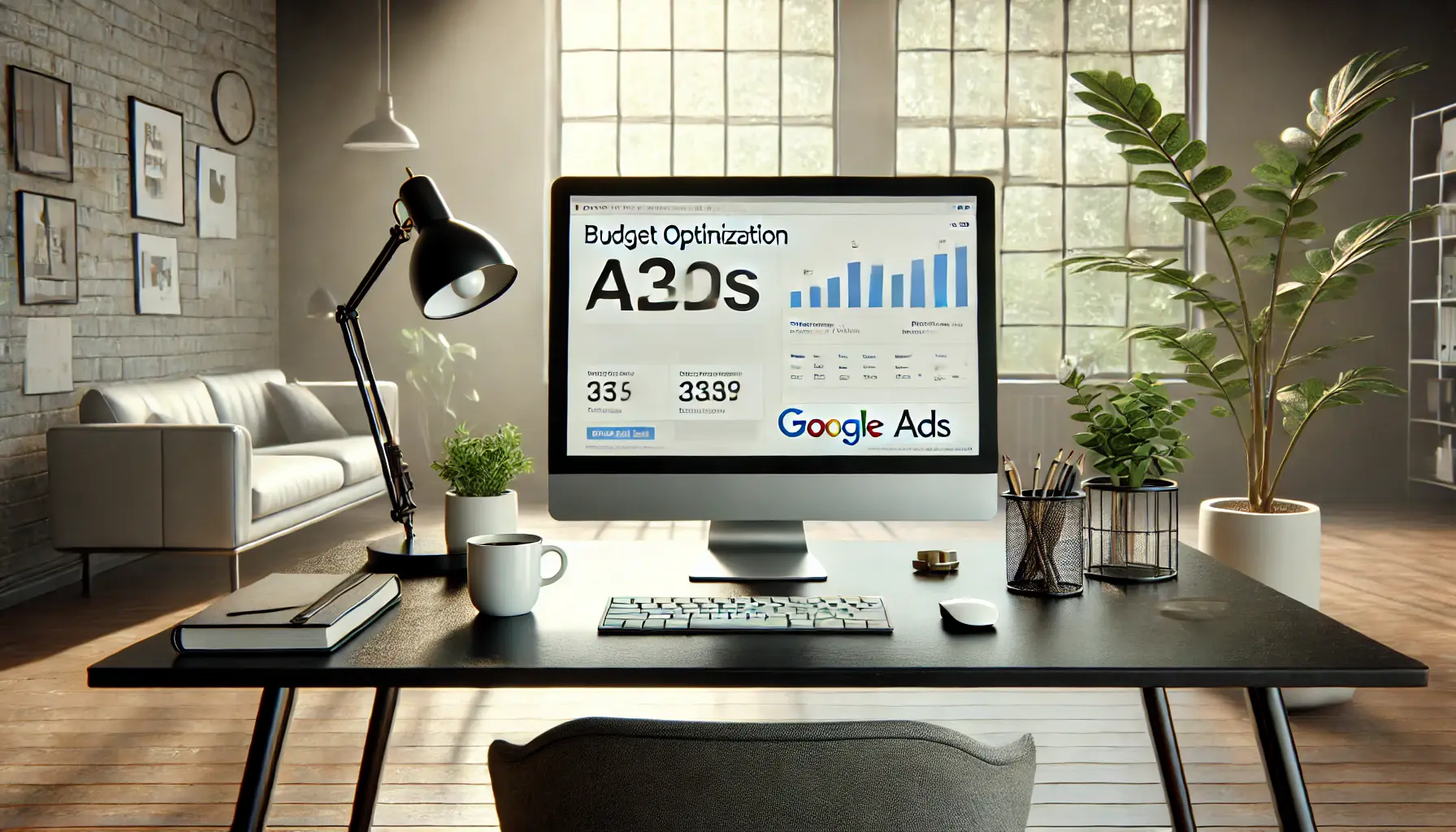Managing a budget effectively for display ads can be an overwhelming but rewarding task for any marketer.
With the ever-changing dynamics of digital marketing, it is very important to allocate your resources wisely to achieve maximum returns on your investment.
Whether you’re a seasoned professional or just starting with display advertising, it pays to understand the subtleties of budget management, which can make all the difference in your campaigns.
In this article, we will go into actionable strategies and tips that will help you master the art of budget management for display ads.
From setting realistic goals to analyzing performance metrics, you’ll learn how to optimize your ad spend and achieve better results without overspending.
Let’s start with the foundational aspects that every advertiser should know.
- Understanding the Basics of Budget Management for Display Ads
- Creating a Solid Display Ad Budget Strategy
- Optimizing Ad Spend for Maximum ROI
- Tracking and Analyzing Display Ad Performance
- Advanced Tips for Long-Term Budget Success
- Mastering Budget Management for Display Ads: Key Takeaways
- Frequently Asked Questions About Budget Management for Display Ads
Understanding the Basics of Budget Management for Display Ads
Budget management in display advertising refers to the strategic allocation and monitoring of financial resources to ensure optimal performance of ad campaigns.
It’s not just about spending less; it’s about spending smartly to achieve your advertising objectives.

Strategic tools for managing budgets in display advertising campaigns.
What is Budget Management in Display Advertising?
Budget management involves deciding how much to invest in display ads, determining where to allocate those funds, and continuously optimizing for better performance.
This includes setting daily budgets, selecting biddingThe process of setting the maximum amount you are willing to pay for ad placements. strategies, and analyzing key metrics to determine points of improvement.
By managing your budget well, you make sure that every dollar works for you, be it increasing website traffic, improving brand visibility, or driving conversions.

Effective resource management for successful advertising campaigns.
Importance of Proper Budget Allocation
Proper budget allocation is important because it determines the success of your campaign directly.
Giving too much to low-performing ads will bleed your resources dry, while giving too little to high-performing campaigns will cap their potential.
- Maximize ROI: Strong budgeting ensures the highest return for your investment.
- Avoid Overspending: Smart budget allocation keeps you away from unnecessary costs.
- Improve Performance Continuously: Focus on what works for you, and you will keep improving with each passing day in your campaigns.

Illustrating the challenges of effective budget management in advertising.
Common Challenges in Budget Management
Despite its importance, managing a budget comes with challenges:
- Balancing between testing new strategies and sticking to proven ones.
- Adapting to fluctuating ad costs and competitive bidding environments.
- Ensuring accurate tracking of spending and performance metrics.
Recognizing these challenges early on allows you to develop strategies to overcome them and optimize your budget effectively.

Strategic planning for setting realistic and measurable goals in advertising.
Setting Realistic Goals for Your Ad Campaigns
Setting realistic and measurable goals is the key to effective budget management.
What are you trying to achieve?
More clicks, conversions, or engagements?
Define your objectives and align your budget in that direction accordingly.
- Specific Goals: Rather than saying “increase traffic,” say “20% increase in website traffic in three months.”
- Measurable Objectives: Use analytics to track progress and assess ROI.
- Flexible Budgets: Be prepared to adjust budgets based on insights into the performance of a campaign.
By understanding these basics related to budget management, you’ll be setting a foundation for running successful display ad campaigns.
Next, we’ll explore how to create a solid budget strategy tailored to your needs.
Effective budget management is about spending smartly, not necessarily less, to achieve advertising goals efficiently.
- Allocate resources wisely to maximize ROI.
- Focus on performance metrics to continuously improve.

Strategic planning for creating a solid display ad budget strategy.
Creating a Solid Display Ad Budget Strategy
Developing a solid budget strategy is essential for successful display ad campaigns.
A well-thought-out approach ensures that your advertising spend aligns with your goals and adapts to market dynamics.
By carefully planning and monitoring your budget, you can maximize your return on investment while avoiding costly mistakes.

Strategic planning and goal setting for defining advertising objectives.
How to Define Your Advertising Goals
Before you allocate a single dollar to display ads, it’s crucial to define clear, measurable goals.
Without knowing what you want to achieve, it is impossible to determine the right budget allocation.
- Understand Your Objectives: Are you looking to drive website traffic, boost brand awareness, or generate leads? Your objectives will shape your strategy.
- Set SMART Goals: Ensure your goals are Specific, Measurable, Achievable, Relevant, and Time-bound. For instance, instead of “increase sales,” aim for “increase sales by 15% within three months.”
- Segment Your Goals: Break larger objectives into smaller milestones to better track progress and adjust your budget as needed.

Strategic calculation of the ideal advertising budget for a campaign.
Calculating the Ideal Budget for Your Campaign
Determining the right budget requires a balance between your financial capacity and the scope of your campaign.
Start by estimating the cost of reaching your target audience and achieving your goals.
- Analyze Market Benchmarks: Research industry standards for cost-per-click (CPC) and cost-per-thousand impressions (CPM) to set realistic expectations.
- Factor in Competition: Higher competition in your niche may require a larger budget to achieve visibility.
- Use Budget Calculators: Tools like Google Ads Budget Calculator can help you estimate costs based on campaign objectives.

Leveraging data and analytics to make informed budget decisions.
Using Data to Inform Budget Decisions
Data-driven decisions are key to optimizing your ad spend.
Analyzing historical data and performance metrics can provide valuable insights into what works best for your campaigns.
- Review Past Campaigns: Identify which ads performed well and which didn’t, and adjust your budget accordingly.
- Leverage Analytics Tools: Platforms like Google Analytics and Ads Manager offer detailed reports on user behavior and campaign performance.
- Identify Trends: Monitor seasonal patterns and market trends to allocate your budget effectively.

Using audience targeting to optimize budget efficiency in advertising campaigns.
The Role of Audience Targeting in Budget Efficiency
Effective audience targeting ensures that your budget is spent on reaching the right people.
The more precisely you can target your audience, the higher your chances of reaching your goals without overspending.
- Focus on Demographic Data: Age, location, and interests can help narrow down your target audience.
- Employ Behavioral Targeting: Analyze user behavior to pinpoint potential customers more likely to convert.
- Try Retargeting: Engage with users who have previously interacted with your brand for better conversion rates.
By developing a sound strategy for your budget, you set up the foundation for a successful display advertising campaign.
With clear goals, informed decisions, and targeted spending, you’ll be well-equipped to achieve your objectives while staying within budget.
Defining clear and measurable goals is the cornerstone of creating an effective budget strategy for display ads.
- Use SMART goals to set precise objectives.
- Utilize budget calculators to estimate realistic costs.
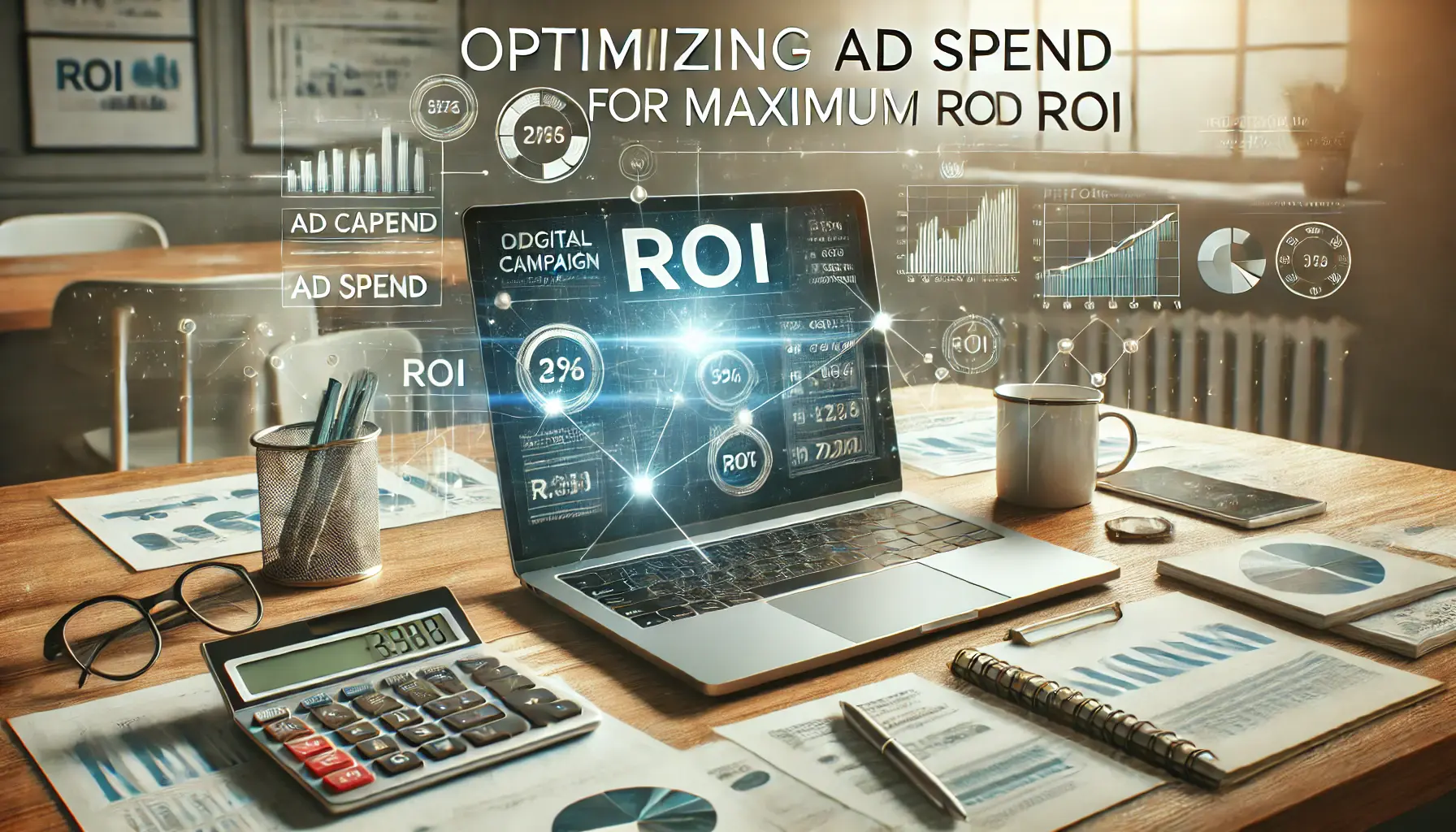
Strategic optimization of ad spend to achieve maximum ROI.
Optimizing Ad Spend for Maximum ROI
Optimizing ad spend is an important ingredient in the display advertising equation to maximize ROIReturn on Investment; a measure of the profitability of an investment..
Every dollar counts, and a strategic approach can help you yield better results while avoiding wasteful spending.
By focusing on performance metrics and making data-driven adjustments, you can ensure that your ad budget delivers the highest value possible.
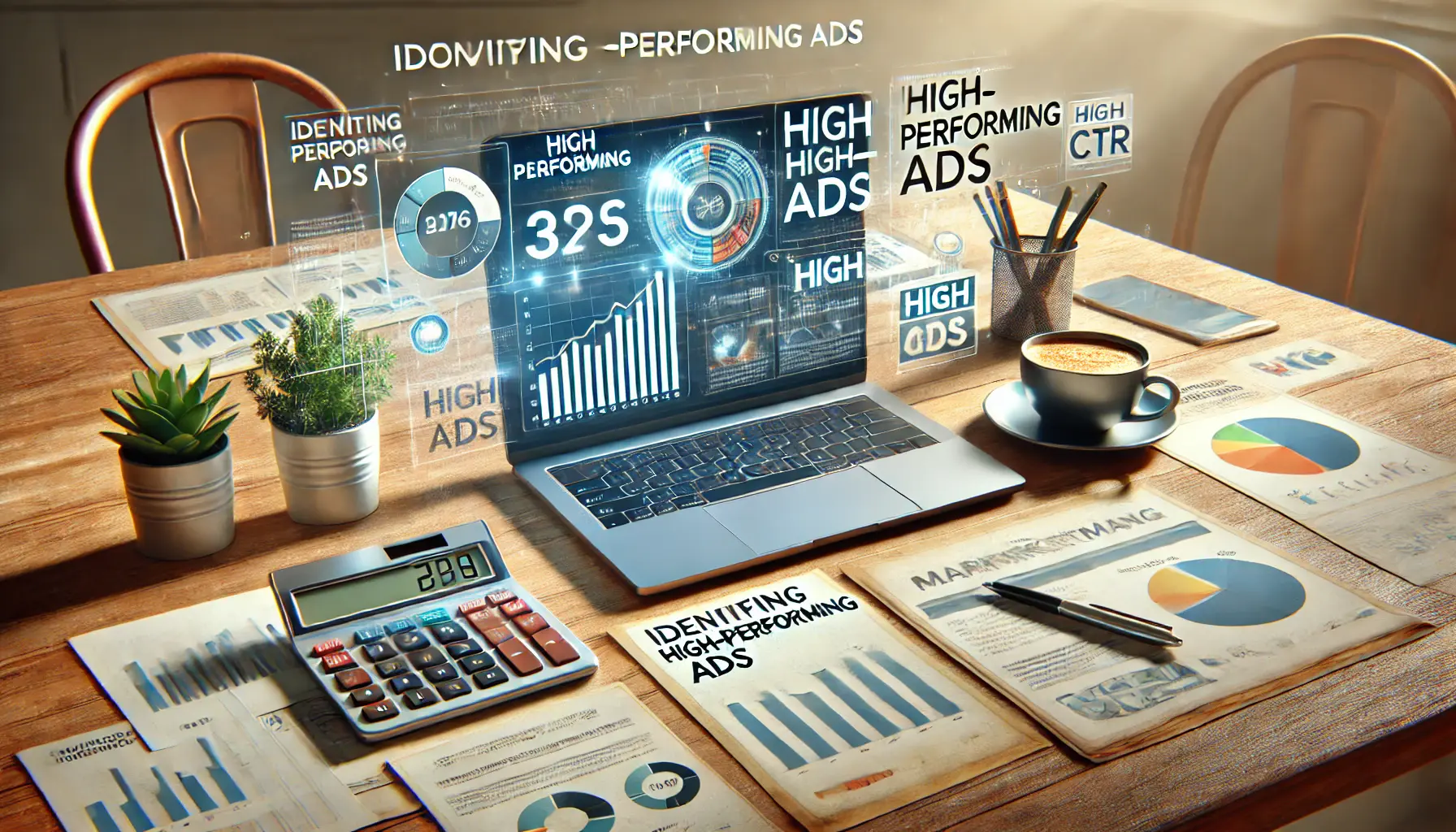
Analyzing ad performance to identify high-performing ads.
Identifying High-Performing Ads
Understanding which ads perform best is the first step in optimizing your ad spend.
Top-performing ads are those that result in the highest number of engagements or conversions at the lowest cost.
- Analyze Click-Through Rates (CTR): A high CTR means your ad resonates with your audience.
- Track Conversion Rates: Focus on ads driving valuable actions like purchases or sign-ups.
- Monitor Cost-Per-Acquisition (CPA): Identify ads that deliver results at a lower cost compared to others.
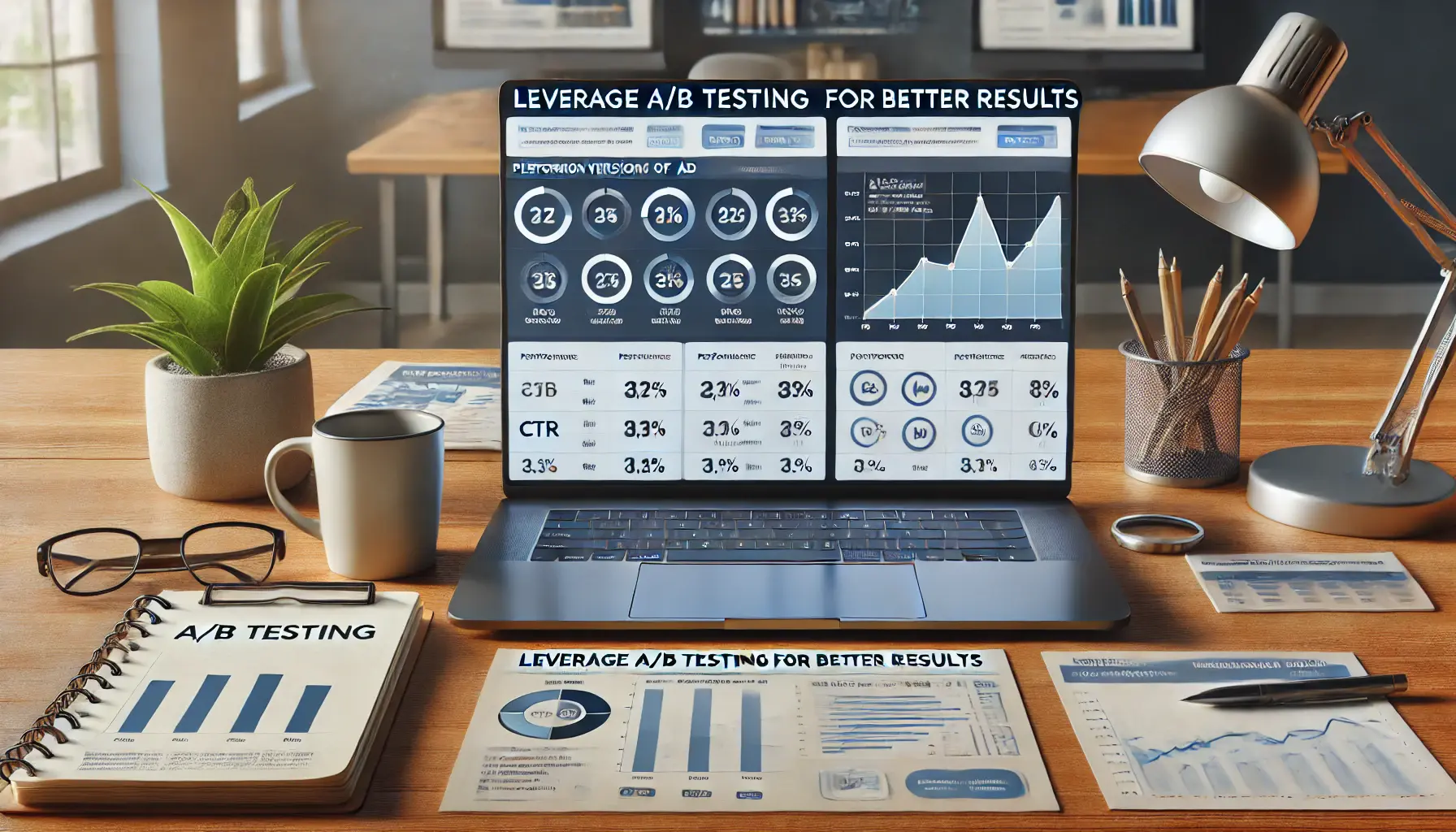
Using A/B testing to optimize ad performance and improve results.
Leverage A/B Testing for Better Results
A/B testing is one of the most useful methods to find out what works best in your display ads.
By comparing two variations of an ad, you can determine which elements drive better performance.
- Test Ad Copy: Experiment with different headlines and calls-to-action to find the most effective messaging.
- Experiment with Visuals: Compare images, videos, and layouts to see which captures attention.
- Adjust Targeting: Test different audience segments to optimize reach and engagement.

Strategically adjusting ad budgets based on performance metrics for optimization.
Adjusting Budgets Based on Performance Metrics
Real-time monitoring of performance metrics allows you to allocate your budget where it’s most effective.
Reassess your budget distribution regularly to focus on high-performing ads and campaigns.
- Scale Successful Campaigns: Increase budgets for ads and campaigns that consistently deliver high ROI.
- Pause Underperforming Ads: Save resources by halting ads that fail to meet benchmarks.
- Optimize Bidding Strategies: Adjust bid amounts based on performance trends to achieve better placement at a lower cost.

Strategic decision-making to avoid over-spending on low-impact ads.
Avoiding Over-Spending on Low-Impact Ads
It’s easy to waste money on ads that don’t drive results.
By identifying and eliminating low-impact ads, you can focus your budget on efforts that deliver value.
- Set Clear Benchmarks: Define acceptable performance metrics and cut ads that fall short.
- Automate Budget Allocation: Use tools like Google Ads’ automated bidding to prioritize effective ads.
- Review Ad Placements: Ensure your ads appear on relevant and high-quality websites.

Leveraging automation tools to optimize advertising budgets and improve efficiency.
Using Automation Tools for Budget Efficiency
Automation tools can simplify budget management and improve efficiency.
These tools help in optimizing ad spend by leveraging algorithms and real-time data for better efficiency.
- Smart Bidding: Let Google Ads automatically regulate bids with its Smart Bidding options to meet the goals set for your campaign.
- Dynamic Creative Optimization: Automatically create and test different ad variations to find out which format works best.
- Budget Pacing Tools: Keep a close eye on daily spend so that you don’t go over budget.
By continuously optimizing your ad spend, you will be able to maximize your ROI and achieve better results with your display advertising campaigns.
The key is to remain proactive, use data as a guide for decisions, and focus on what is working.
Optimizing ad spend requires focusing on high-performing ads and making data-driven adjustments to maximize ROI.
- Identify top-performing ads based on CTR, CPA, and conversions.
- Leverage A/B testing to refine your strategies.
Analyzing and tracking display ad performance for better campaign insights.
Tracking and Analyzing Display Ad Performance
Effective budget management for display ads is impossible without proper tracking and analysis.
It gives you deeper insight into what works and what does not, enabling you to make informed decisions to increase your ROI.
By understanding your campaign data, you can optimize your strategy for continuous improvement.

Monitoring key metrics to effectively manage advertising budgets.
Key Metrics to Monitor in Budget Management
When analyzing the performance of display ads, there are several key metrics to focus on.
These metrics not only indicate how well your campaigns are performing but also help you identify areas where you can optimize your ad spend.
- Impressions: The number of times your ad is displayed to users. High impressions indicate good visibility, but it’s important to track other metrics for meaningful engagement.
- Click-Through Rate (CTR): The percentage of users who click on your ad after seeing it. A better CTR indicates your ad resonates well with your target audience.
- Conversion Rate: The percentage of users who take a desired action, such as buying or subscribing, after being referred from your ad.
- Cost-Per-Click (CPC): The amount you pay per each ad click, on average. Lower CPC with high conversions indicates efficient spending.
- Return on Ad Spend (ROAS): Measures the revenue generated for every dollar spent on ads. A higher ROAS signals successful campaigns.
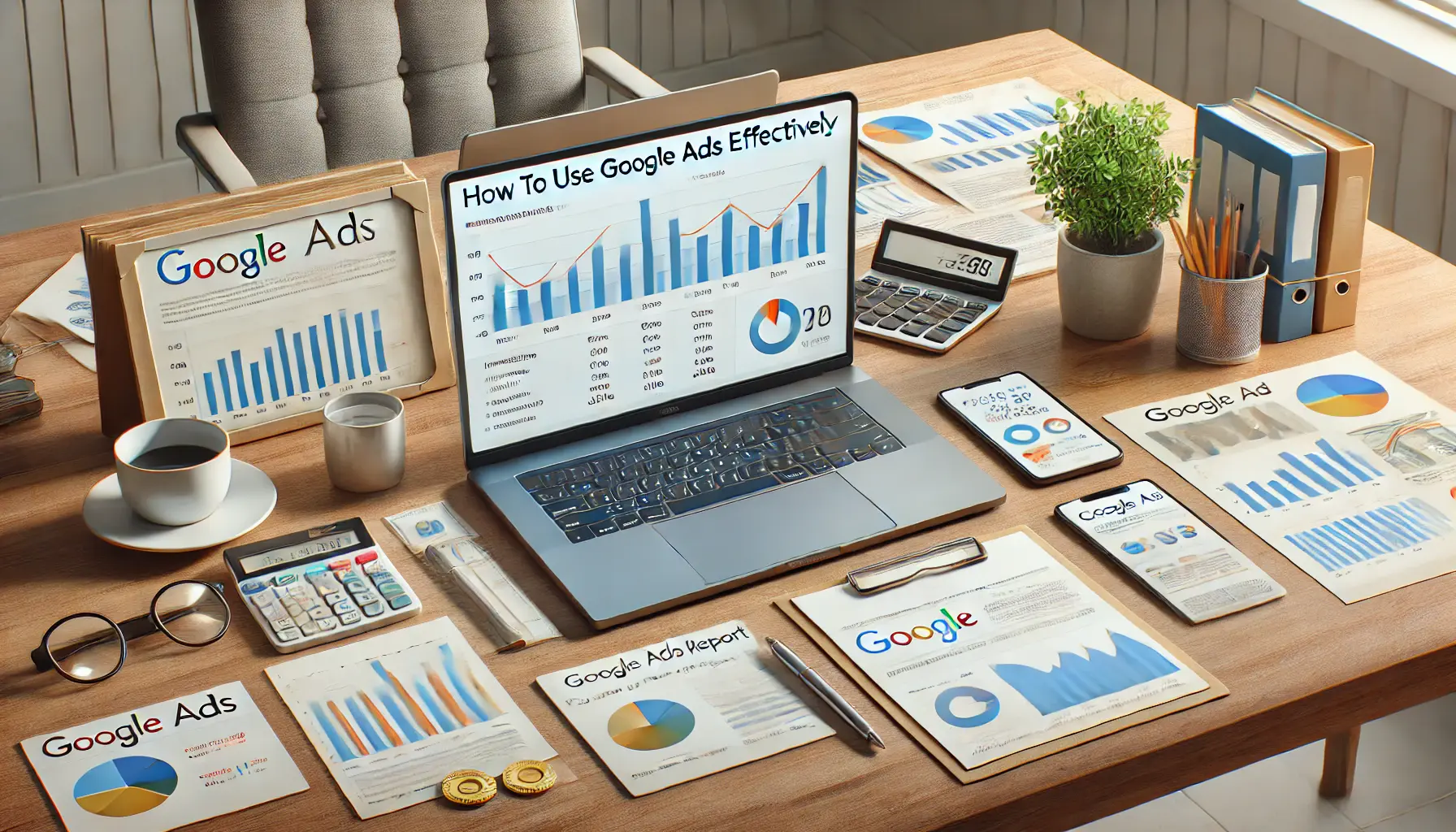
Analyzing and using Google Ads reports to make informed advertising decisions.
How to Use Google Ads Reports Effectively
Google Ads provides detailed reports that can help you track and analyze your display ad performance.
By leveraging these reports, you can identify trends and make data-driven decisions to improve your campaigns.
- Overview Dashboard: Get a snapshot of overall performance, including impressions, clicks, and conversions.
- Audience Insights: Understand the demographics and behaviors of users interacting with your ads.
- Keyword Performance: Identify which keywords are driving the most traffic and conversions.
- Placement Reports: See where your ads are being displayed and evaluate the quality of those placements.

Identifying trends and patterns in campaign data for optimized decision-making.
Spotting Trends and Patterns in Campaign Data
Analyzing trends and patterns in your data helps you adapt to changing market conditions and audience behavior.
Look for seasonality, time-of-day performance, and audience engagement trends.
- Seasonal Patterns: Identify peak periods when your audience is more likely to engage with your ads.
- Device Usage Trends: Determine whether your audience prefers mobile, desktop, or tablets and optimize your campaigns accordingly.
- Time-of-Day Performance: Allocate budgets to times when engagement rates are highest.

Strategic optimization of ad budgets based on seasonal trends and insights.
Optimizing Budget Based on Seasonal Insights
Seasonal insights can significantly impact your budget strategy.
Adjust your spending during high-demand seasons to capitalize on increased audience activity.
- Increase Budgets During Peak Seasons: Allocate more resources during holidays or industry-specific high-demand periods.
- Pause Low-Performing Campaigns: Save budget by reducing spending on campaigns that don’t perform well during off-peak times.
- Launch Special Promotions: Use seasonal promotions to boost engagement and conversions.

Comparing Cost-Per-Click and Cost-Per-Acquisition metrics for digital advertising strategies.
Understanding Cost-Per-Click vs. Cost-Per-Acquisition
Balancing CPCCost-Per-Click; the amount paid for each click on an ad. and CPACost-Per-Acquisition; the cost incurred to acquire a customer or lead. is essential for efficient budget management.
While CPC measures the cost of getting users to click on your ad, CPA tracks the cost of converting them into customers.
- Focus on CPA for Conversions: A low CPC is great, but a lower CPA ensures you’re getting high-value results.
- Evaluate Campaign Efficiency: Use both CPC and CPA to assess the overall efficiency of your campaigns.
- Prioritize High-Value Actions: Focus on campaigns that deliver the best ROI, even if CPC is slightly higher.
Use these metrics and tools to make data-driven adjustments that will allow for sustained success.
Tracking key metrics like impressions, CTRClick-Through Rate; the percentage of users who click on an ad after seeing it., and ROASReturn on Ad Spend; the revenue generated for every dollar spent on ads. helps uncover trends and optimize budget allocations effectively.
- Utilize analytics tools for in-depth campaign analysis.
- Adjust strategies based on seasonal and behavioral trends.

Strategic planning for long-term budget success and sustained advertising performance.
Advanced Tips for Long-Term Budget Success
Effective budget management of display ads does not stop at the optimization of single campaigns; it requires a forward-looking approach for long-term success.
By employing advanced strategies, you can consistently improve your ad performance, stay ahead of the competition, and make the most of your advertising budget.

Gradually scaling your ad budget to maximize long-term growth and ROI.
The Benefits of Scaling Your Ad Budget Gradually
Scaling your ad budget gradually is a strategic way to maintain control over performance and ROI.
Ramping up spending in measured increments allows you to monitor results and avoid costly mistakes.
- Test Before You Scale: Start small and evaluate the performance of your campaigns before increasing budgets.
- Monitor Key Metrics: Keep a close eye on metrics like ROAS, CTR, and conversions to ensure scaling doesn’t negatively impact results.
- Adapt to Performance Trends: Gradually allocate more resources to high-performing campaigns as you scale.

Strategic reinvestment in high-performing ad campaigns to maximize ROI.
Reinvesting in Successful Campaigns
Reinvesting in your best-performing campaigns ensures that your budget is focused on what works.
It’s a simple yet powerful way to maximize ROI.
- Analyze Top Performers: Identify campaigns with the highest ROAS and allocate additional budget to them.
- Expand Targeting: Use the success of high-performing campaigns to explore new audience segments.
- Optimize Creatives: Continuously update ad designs and messaging to maintain engagement and avoid ad fatigue.

Strategic diversification of ad spend across multiple advertising platforms.
Diversifying Ad Spend Across Platforms
Relying solely on one advertising platform can limit your reach and expose you to risks, such as changes in platform policies or competition.
Diversifying your ad spend ensures a balanced approach.
- Leverage Multiple Platforms: Explore opportunities on Google Ads, Facebook Ads, LinkedIn Ads, and emerging platforms like TikTok.
- Experiment with New Channels: Test platforms that align with your audience’s preferences to find untapped opportunities.
- Monitor Cross-Platform Performance: Track results across platforms to understand where your budget is most effective.

Staying updated on industry trends with digital resources and proactive strategies.
How to Stay Updated on Industry Trends
Staying informed about the latest trends in digital marketing ensures that your budget strategies remain relevant and competitive.
Regular updates allow you to adjust to new opportunities and challenges.
- Follow Industry News: Subscribe to newsletters and blogs from trusted sources like Google Ads and Marketing Land.
- Attend Webinars and Events: Join industry webinars, conferences, and online forums to gain insights from experts.
- Use Analytics Tools: Leverage tools like Google Trends and SEMrush to identify emerging keywords and audience behaviors.

Proactively preparing for fluctuations in advertising costs with strategic planning.
Preparing for Unexpected Changes in Ad Costs
Ad costs can fluctuate due to factors such as seasonality, competition, and market conditions.
Being prepared for such changes will help you maintain the stability of your budget.
- Create a Contingency Plan: Set aside part of your budget to handle any sudden spikes in ad cost increases.
- Monitor Bid Strategies: Balance bids to maintain competitiveness while not overextending beyond your budget.
- Optimize Spending: In periods where ad costs are high, focus only on campaigns that drive the best ROI.
With these advanced tips, you will be able to sustain budget success for your display advertising campaigns.
The key is to be proactive, flexible, and well-informed, adapting to changes that come your way while keeping long-term goals in perspective.
Scaling budgets gradually and reinvesting in high-performing campaigns ensure sustained success in display advertising.
- Maintain flexibility to adapt to market changes.
- Diversify spending across platforms to mitigate risks.
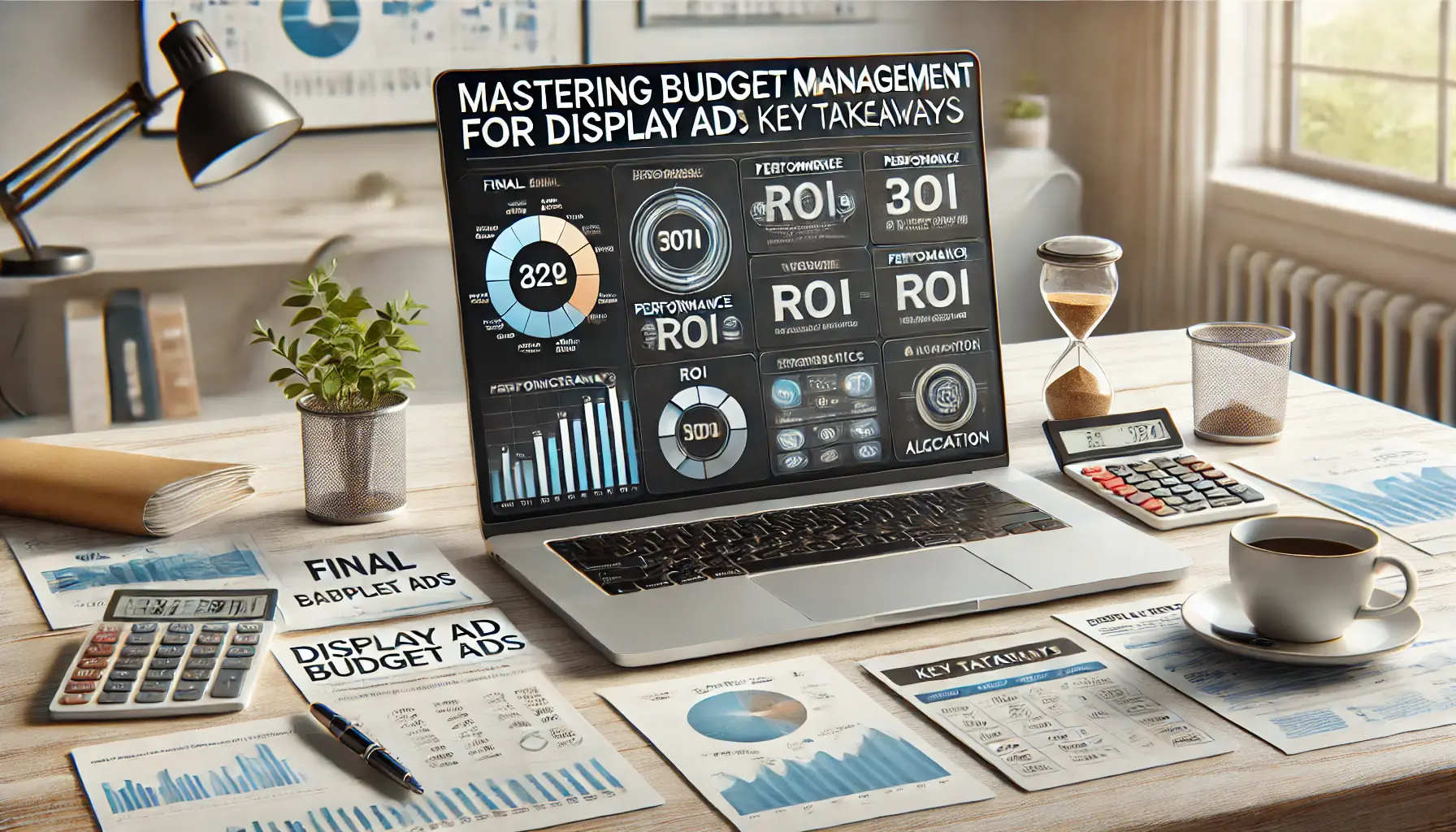
Summarizing key takeaways for mastering budget management in display ads.
Mastering Budget Management for Display Ads: Key Takeaways
The bedrock of any display advertising strategy is budget management.
Setting realistic goals, leveraging data, and utilizing advanced tools—every step you take in better managing your ad spend contributes to the success of your campaigns.
This article has provided actionable insights to help you optimize your budget and achieve long-term success in the dynamic world of display advertising.

Understanding the importance of budget management in successful ad campaigns.
Why Budget Management Matters
Proper budget management ensures your advertising dollars are spent wisely, driving the best possible results.
By monitoring performance metrics such as click-through rates (CTR), conversions, and return on ad spend (ROAS), you gain a deeper understanding of what works and where adjustments are needed.
A strategic approach allows you to focus on high-performing ads and refine your campaigns for maximum efficiency.

Strategic financial planning for effective budget management in advertising.
Key Strategies for Effective Budget Management
Throughout this article, we’ve highlighted several strategies to help you take control of your display ad budget:
- Define Clear Goals: Establish SMART objectives to align your budget with your desired outcomes.
- Leverage Data: Use analytics tools to track performance and make informed decisions.
- Test and Optimize: Conduct A/B tests to determine what resonates best with your audience.
- Adapt to Trends: Monitor seasonal and market changes to adjust your budget proactively.
- Diversify Platforms: Avoid over-reliance on one platform by exploring multiple advertising channels.

Applying advanced strategies to ensure sustained success in advertising campaigns.
Advanced Tips for Sustained Success
Long-term budget success requires a proactive and flexible mindset.
Scale your ad spend gradually, reinvest in high-performing campaigns, and stay informed about industry trends.
Additionally, preparing for unexpected fluctuations in ad costs ensures your campaigns remain stable and effective even in changing conditions.

Reflecting on the key takeaways and conclusions of budget management strategies.
Final Thoughts
Mastering budget management for display ads is a continuous process that evolves with your goals, audience behavior, and industry trends.
By implementing the strategies discussed in this article, you can optimize your ad spend, improve ROI, and position your business for sustained success.
Remember, every dollar in your budget has significant value when directed strategically.
Mastering budget management involves setting clear goals, leveraging data, and diversifying ad platforms for long-term success.
- Track performance metrics regularly to optimize campaigns.
- Focus on ROI-driven strategies for better results.
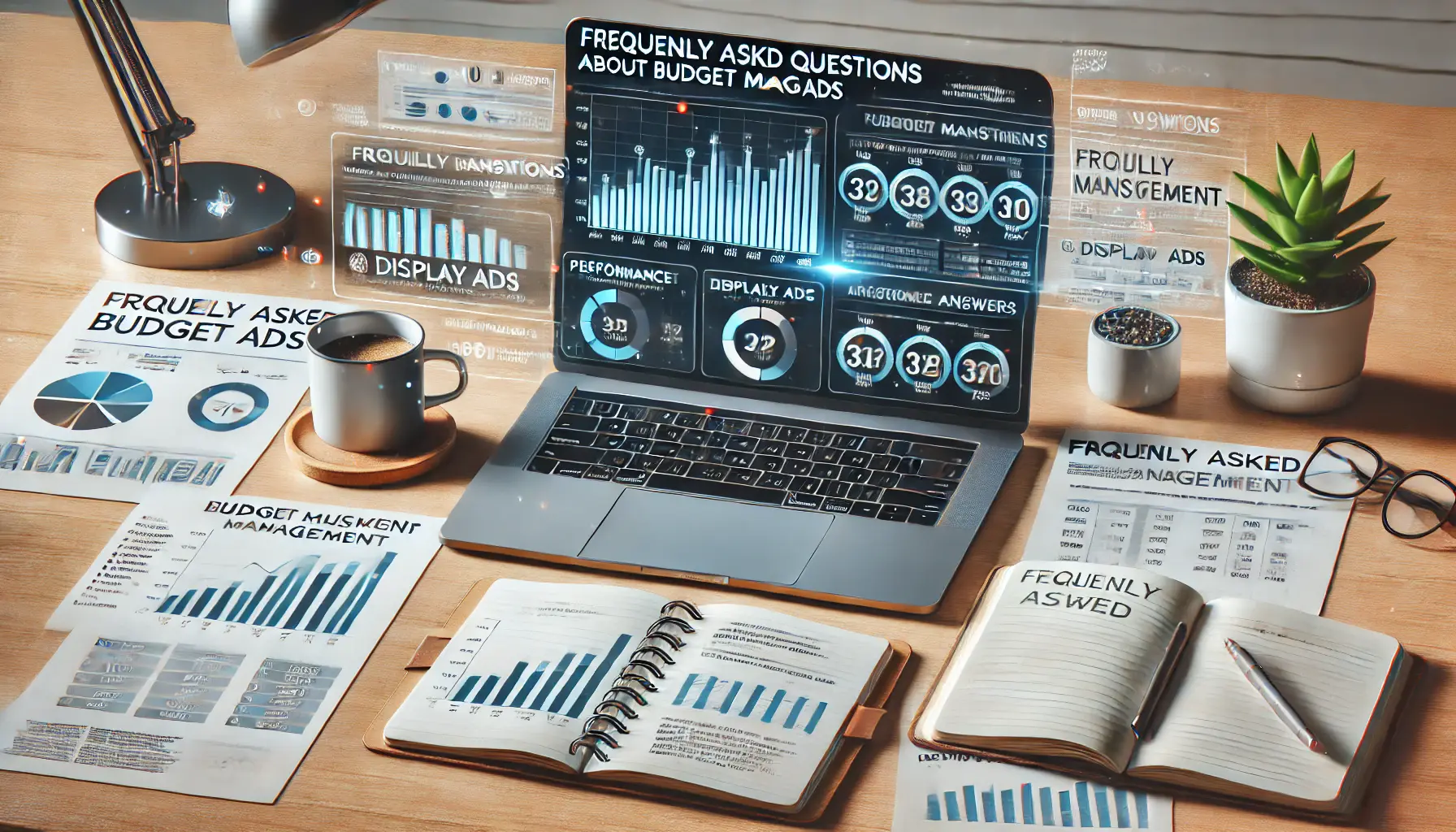
Answering frequently asked questions about managing budgets for display ads.
Your campaigns can be managed by an agency specialized in Google Ads, check out our service page.
Frequently Asked Questions About Budget Management for Display Ads
Here are answers to some of the most common questions about managing budgets for display ads, providing insights into best practices, tools, and strategies to help you achieve optimal results in your advertising campaigns.
Budget management in display advertising is a thoughtful process of allocating and tracking your ad spend to ensure each dollar is effectively utilized toward achieving campaign objectives.
Set a realistic ad budget based on clearly defined goals, market benchmark analysis, and cost estimates aligned with audience size, industry competition, and desired outcomes.
Track metrics such as click-through rates (CTR), conversions, cost-per-click (CPC), and return on ad spend (ROAS) to assess campaign performance and optimize spending.
Diversification reduces reliance on a single platform, expands reach, and mitigates risks associated with platform-specific changes or increased competition.
Increase spending during peak seasons, focus on promoting relevant ads, and prioritize campaigns with proven success rates to optimize your budget effectively.
Google Ads Manager, SEMrush, and dynamic creative optimization platforms help monitor performance, automate spending, and improve efficiency.
Focus on high-value actions.
While low CPC is beneficial, prioritize cost-per-acquisition (CPA) to ensure valuable customer conversions align with your budget goals.
Gradual scaling allows you to monitor performance closely, adapt to trends, and allocate resources effectively without risking over-spending or reduced ROI.
Prepare for cost fluctuations by creating a contingency budget, monitoring bidding strategies, and focusing on campaigns that deliver the best ROI during periods of increased costs.






